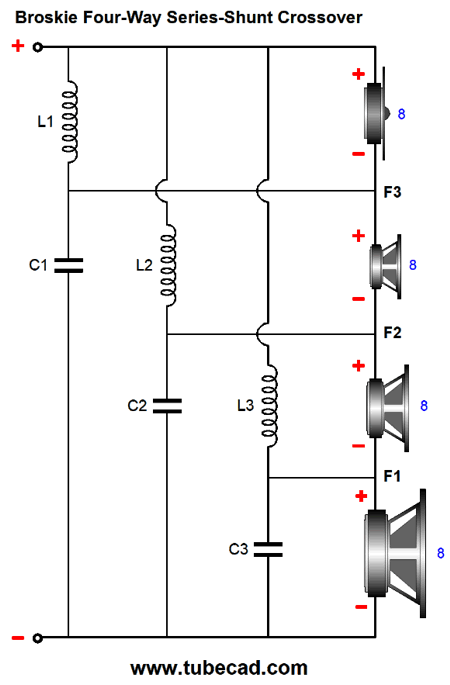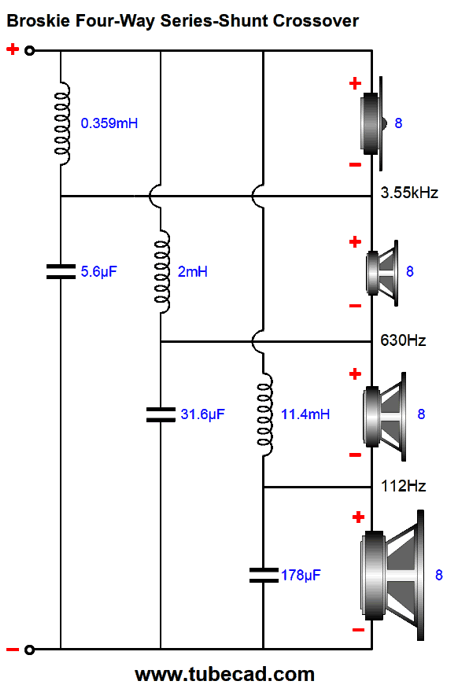What about this one with first order and relativly high XO crossing : the classic ex Peerless SS Discovery 2604/833000 : https://www.scan-speak.dk/datasheet/pdf/d2604-833000.pdf : nice roll off in the low end ?
Yes, it's a great tweeter this one.
32 mm diaphragm, good stuff, no wonder it's such high sensitivity even without a waveguide.
2 dB more sensitive than XT25TG30-04.
It will be perfect with a waveguide and a simple 1st order HP, even at low x-over point, maybe 1.8 - 2 kHz.
Check this:
Test | Scan-Speak Discovery D2604 / 833000
Keep in mind the sensitivity is for 2.8V/1m which is actually 2 Watts@4 ohms.
Not that it matters as long as everything is referenced to 2.8V/1m.
Also, equally important is its modest price.
Here in Oz it's AU$69.
Hard to find such quality at this price.
A great tweeter
Many thanks diyiggy, looks very good for another project I am working on which needs a 4 ohm tweeter
DM 🙂
read somewhere the Vifa h26 is fantastic... or the late Vifa 26... don't remember ?!
What about this one with first order and relativly high XO crossing : the classic ex Peerless SS Discovery 2604/833000 : https://www.scan-speak.dk/datasheet/pdf/d2604-833000.pdf : nice roll off in the low end ?
Many thanks diyiggy, looks very good for another project I am working on which needs a 4 ohm tweeter
DM 🙂
Many thanks diyiggy, looks very good for another project I am working on which needs a 4 ohm tweeter
DM 🙂
Why a project needs specifically a 4 Ohm tweeter?
Why a project needs specifically a 4 Ohm tweeter?
Because it is for a series network where all driver values R need to be as close as possible
Because it is for a series network where all driver values R need to be as close as possible
Ahh okay, thanks!
read somewhere the Vifa h26 is fantastic... or the late Vifa 26... don't remember ?!
What about this one with first order and relativly high XO crossing : the classic ex Peerless SS Discovery 2604/833000 : https://www.scan-speak.dk/datasheet/pdf/d2604-833000.pdf : nice roll off in the low end ?
http://sbacoustics.com/wp-content/uploads/2020/05/SB26STWGC-4.pdf
This SB looks nice, low fs, good x max for a tweeter, slight horn, higher SPL. Madisound is showing it at $88 US so maybe out of range of your budget??
Because it is for a series network where all driver values R need to be as close as possible
You know that DCR of a driver is not the same as its impedance over its range.
To have a flat impedance you need to employ some Zobel networks across the woofer as a minimum.
And if it's a 3-way also across the midrange.
And then in a series x-over all this will upset the relationship between the drivers big time, so you'll end up with a mish-mash of a phase and amplitude response.
Which will defeat the reason for a series network.
Series 1st order filters are great and I love them, but not that simple and easy to implement.
You know that DCR of a driver is not the same as its impedance over its range.
To have a flat impedance you need to employ some Zobel networks across the woofer as a minimum.
And if it's a 3-way also across the midrange.
And then in a series x-over all this will upset the relationship between the drivers big time, so you'll end up with a mish-mash of a phase and amplitude response.
Which will defeat the reason for a series network.
Series 1st order filters are great and I love them, but not that simple and easy to implement.
Absolutely, I have designed all the necessary Zobel filters.
I have realised that this is just the start of all the fun and plenty of measurement to come!!
I will be likely be experimenting using these filters
Broskie Four Way Series-Shunt Crossovers
New Crossover Designs


Btw, is there a rule to match the spl of a first order HP with the lower driver ? Have we to get a slighty more efficienty tweeter and higher XO frequency electrical to meet the lower driver at the whished acoustical XO?
For illustration and Duntech speakers in mind: if a P17 want to be crossed by the diyer at 4k hz for instance, should the first order HP needs a tweeter with a little more 2.8 v efficienty and crossed with the cap at 6k hz to match the 4k hz ?
Sorry if stupid question, was asking how avoiding a resistor in serie like Tony Gee does...and how to deal with the slow and long 6db roll off of the 1sr order XO...
For illustration and Duntech speakers in mind: if a P17 want to be crossed by the diyer at 4k hz for instance, should the first order HP needs a tweeter with a little more 2.8 v efficienty and crossed with the cap at 6k hz to match the 4k hz ?
Sorry if stupid question, was asking how avoiding a resistor in serie like Tony Gee does...and how to deal with the slow and long 6db roll off of the 1sr order XO...
Last edited:
For illustration and Duntech speakers in mind: if a P17 want to be crossed by the diyer at 4k hz for instance, should the first order HP needs a tweeter with a little more 2.8 v efficienty and crossed with the cap at 6k hz to match the 4k hz ?
Sorry if stupid question, was asking how avoiding a resistor in serie like Tony Gee does...and how to deal with the slow and long 6db roll off of the 1sr order XO...
Yes, that would be one brilliant way of doing it.
The full range guys regularly do it when adding super tweeters.
And in a 2-way you can insert the BSC circuit before the x-over, so it will pad both drivers equally without any further trouble.
Works for series and parallel filters.
BSC : bafle step compensation, aka - 6 db roll off from circa 2000 hz to Helmothz frquency (200 hz in many rooms) ? Does it affect also the tweeter if the first order high pass has an electrical Xover as high as 4k/8k hz ?
Dunlavys' and after Duntechs' were said to sounds very good, thanks to the progress we can measure in room nowaday and cheap 🙂 ... well just the knowledge and experience is hard to get vs Mr Dunlavy (rip) for a week-ebd enthusiast hobbyst...
Dunlavys' and after Duntechs' were said to sounds very good, thanks to the progress we can measure in room nowaday and cheap 🙂 ... well just the knowledge and experience is hard to get vs Mr Dunlavy (rip) for a week-ebd enthusiast hobbyst...
BSC 6 dB?
not necessarily.
could be anything from 1 to 6, most likely 2 - 3 dB.
it depends on so many factors, not just theory.
and it's your choice, if you like fat bass go for 6 dB, if you like classical music or jazz maybe 2 - 3 dB will suit you better.
what I explained is the case mostly for 2-ways.
imagine a series 2-way, 1st order LP and HP, levels even, no conjugates, just an L and a C, and maybe a series R with the tweeter.
now put another LR (parallel) in series with the positive leg.
what you get is an even reduction in amplitude from the corner frequency of the BSC to the very top.
it becomes similar to a full range driver with an LR circuit in series.
3-ways can deal with the issue in a different manner.
Not sure how John Dunlavy dealt with BSC, but considering that most of his designs were 3 or 4 way, his approach must have been different.
not necessarily.
could be anything from 1 to 6, most likely 2 - 3 dB.
it depends on so many factors, not just theory.
and it's your choice, if you like fat bass go for 6 dB, if you like classical music or jazz maybe 2 - 3 dB will suit you better.
what I explained is the case mostly for 2-ways.
imagine a series 2-way, 1st order LP and HP, levels even, no conjugates, just an L and a C, and maybe a series R with the tweeter.
now put another LR (parallel) in series with the positive leg.
what you get is an even reduction in amplitude from the corner frequency of the BSC to the very top.
it becomes similar to a full range driver with an LR circuit in series.
3-ways can deal with the issue in a different manner.
Not sure how John Dunlavy dealt with BSC, but considering that most of his designs were 3 or 4 way, his approach must have been different.
Thnak you for that inputs.
I assume the bafle step is also related to the width shape, so indeed one sould measure at home in relation to taste, room modes and also, I didn't know, still of music !
Thanks again the good tips...
I assume the bafle step is also related to the width shape, so indeed one sould measure at home in relation to taste, room modes and also, I didn't know, still of music !
Thanks again the good tips...
- Home
- Loudspeakers
- Multi-Way
- Suggestion on tweeters?